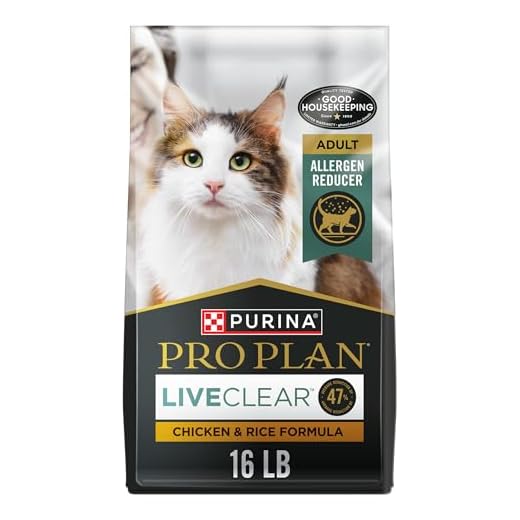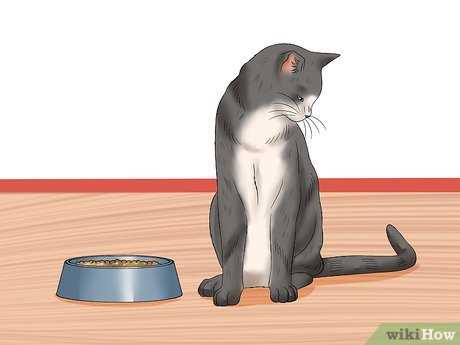



For optimal nutrition and hydration, incorporating both moist and crunchy delights in a feline’s diet can be a wise choice. Each type of nourishment offers unique benefits that can enhance overall well-being. The soft variety tends to provide a significant amount of water, aiding in hydration, while the crunchy option promotes dental health through its texture.
Research indicates that a blend of these two options can lead to improved palatability, making mealtime more enjoyable. A cat’s taste preferences may vary, and offering both can cater to individual likes and dislikes. It’s worth experimenting with different ratios to find the perfect balance that keeps a whiskered friend satisfied.
Monitoring any changes in health or behavior after introducing this combination is essential. Pay attention to changes in weight, coat condition, and energy levels. Consulting with a veterinarian can ensure that this feeding strategy aligns with specific dietary needs and health goals.
Should You Combine Moist and Crunchy Nourishment?
Combining these two types of nourishment can be beneficial. The moist variety provides hydration, while the crunchy option supports dental health. Balancing both can enhance overall well-being.
Benefits of Blending
- Increased hydration from the moist variety helps maintain kidney function.
- Crispy pieces can reduce tartar buildup, promoting oral hygiene.
- Textural variety can stimulate appetite, appealing to picky eaters.
Things to Keep in Mind
- Monitor portion sizes to avoid overfeeding.
- Introduce changes gradually to prevent digestive upset.
- Choose high-quality options to ensure proper nutrition.
Experimenting with these combinations could lead to a happy and healthy dining experience! Just be sure to observe how the furry friend reacts to the new mix.
Understanding Nutritional Benefits of Wet Cat Food
Choosing a moist option delivers a multitude of health advantages. High moisture content assists in hydration, crucial for feline well-being. This is particularly beneficial for those who may not drink enough water. A well-hydrated body supports kidney function and reduces the risk of urinary tract issues.
Rich in protein and low in carbohydrates, these meals offer a balanced diet that aligns with a cat’s natural dietary needs. The presence of animal-based proteins promotes muscle maintenance and growth, essential for energy and vitality.
Flavor and aroma play a significant role in enticing even the pickiest eaters. Enhanced palatability means enjoying meals can become a delightful experience, encouraging regular consumption. This is especially useful for seniors or those recovering from illness.
Additionally, these options often contain fewer preservatives and fillers, focusing on whole ingredients. This contributes to overall health and can lead to a shinier coat and healthier skin.
For those curious about the impact of technology on pet care, understanding concepts like how does a wireless electric dog fence work can be insightful.
Understanding Nutritional Benefits of Dry Cat Food
Crunchy morsels offer several advantages that contribute to overall health. These kibbles typically contain higher levels of carbohydrates and protein, providing energy for daily activities. They often assist in maintaining a healthy weight due to lower moisture content, which can lead to better portion control.
Dental Health
The texture of these pellets helps to reduce plaque buildup and tartar on teeth. Chewing on them can promote better oral hygiene, potentially decreasing the risk of dental issues. Regular consumption may lead to fresher breath, which is a bonus for any feline.
Convenience and Storage
Storing these products is simple. They have a longer shelf life than their moist counterparts, making them easy to keep on hand. Pouring a scoop into a bowl can be quicker than opening and serving from cans or pouches, especially during busy mornings.
For those who appreciate a blend of taste and texture, incorporating these crunchy bites can enhance the dining experience. Their variety in flavors and formulations means it’s possible to find a blend that caters to specific dietary needs while ensuring satisfaction at mealtime.
Assessing Your Cat’s Dietary Needs
Before settling on a dining routine, consider individual requirements. Age, weight, activity level, and health status are critical factors influencing nutritional preferences. Kittens generally require more protein and calories compared to senior felines who may benefit from lower fat content. Regular consultations with a veterinarian can provide tailored advice based on these elements.
Monitoring Weight and Health
Regularly check the weight and overall condition. If a furry friend shows signs of being overweight or underweight, adjustments in portions or types of meals may be necessary. Look for visual cues such as rib visibility and body shape. Health issues like diabetes or kidney problems also dictate specific dietary restrictions, making it vital to stay informed about personal health conditions.
Hydration Considerations
Hydration plays a significant role in dietary choices. Cats often do not drink enough water, particularly those consuming primarily kibble. Incorporating moisture-rich options can enhance fluid intake, supporting kidney function and urinary health. Finding the right balance can be specific to each pet’s needs, and monitoring their water consumption can guide adjustments.
For those interested in keeping their furry companions clean and well-groomed, consider exploring the best grooming vacuum for cats. Staying knowledgeable about grooming aids contributes to overall well-being.
How to Safely Combine Wet and Dry Food
Start with small portions of each type of meal. Gradually introduce the combination by mixing a tablespoon of wet nourishment with a quarter cup of crunchy bites. This approach helps monitor reactions effectively.
Observe for any signs of digestive discomfort. If my tummy feels upset, adjust the ratio or pause the blend altogether. It’s essential to keep a close eye on how my body responds during the transition period.
Maintain Freshness
Always serve fresh meals. Leaving a mixture out for too long can lead to spoilage. If not consumed within a couple of hours, discard any leftovers to avoid health risks.
Hydration Matters
Keep a clean bowl of water nearby. Even with moist meals included, hydration is key. Ensure access to fresh water at all times, as it complements the overall dietary balance.
Potential Risks of Mixing Food Types
Combining different varieties of nutrition can lead to digestive complications. Some felines might experience gastrointestinal upset, including diarrhea or vomiting. This reaction often occurs due to abrupt changes in diet composition.
Another risk involves nutrient imbalance. Certain formulations may not provide adequate proportions of essential vitamins and minerals when paired incorrectly, potentially leading to deficiencies or excesses over time.
Allergies and Sensitivities
Allergic reactions can arise from introducing new ingredients. A feline with a known sensitivity to a specific protein or carbohydrate may show adverse effects when exposed to unfamiliar elements through mixed meals.
Weight Management Challenges
Caloric content varies significantly between product types. Mixing could lead to unintentional overconsumption, complicating weight control efforts. Monitoring portion sizes becomes critical to prevent obesity or other weight-related health issues.
Monitoring Your Health After Dietary Changes
After altering my eating habits, paying close attention to certain signs is crucial. Keep a daily log of any changes in behavior, litter box habits, and overall energy levels. Noticing these aspects can help determine if the new combination suits me.
Weight fluctuations are a key indicator. A steady weight is ideal, while sudden gains or losses may suggest that adjustments are necessary. Regular weigh-ins can help track these changes effectively.
Behavioral shifts can also indicate how well my new meals are working. Increased playfulness or sudden lethargy might signal a need for a different approach. Watch for any signs of discomfort or distress, as these can be a clear indication that something isn’t right.
| Sign | What to Look For | Possible Action |
|---|---|---|
| Weight Change | Gain or loss of more than 1-2 pounds | Consult a vet for advice |
| Behavioral Changes | Increased aggression or hiding | Reassess dietary mix |
| Litter Box Habits | Changes in frequency or consistency | Monitor hydration and food type |
| Energy Levels | More or less active than usual | Adjust diet or discuss with a vet |
Consulting with a veterinarian after noticing any concerning signs ensures that dietary changes support my health optimally. Keeping an open line of communication about any observations will help tailor my meals to fit my needs better.









